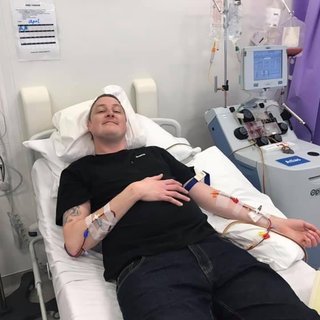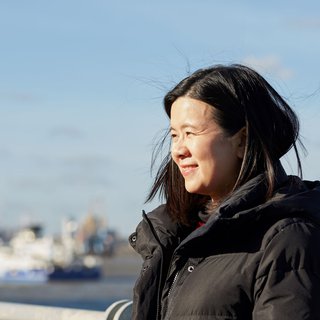I'm so grateful I was able to have CAR T-cell therapy
Jacquie was diagnosed with diffuse large B-cell lymphoma (DLBCL), a type of non-Hodgkin lymphoma, in August 2019. She had CAR T-cell therapy in February 2022, and has been in remission ever since.
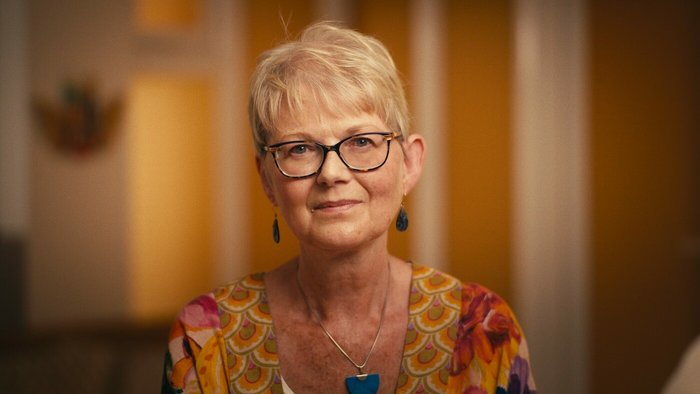
My journey towards blood cancer diagnosis began around March 2019 when I started getting really bad headaches. At first my GP suspected it was sinusitis and prescribed antibiotics, but by July the headaches were no better, and one day I woke up with blurred vision. My GP sent me straight to hospital, but it took a couple of visits before they agreed to do a CT scan. The scan revealed the cause of my symptoms: a tumour in the meninges (membranes) of my brain.
I was referred to an excellent surgeon, and he was confident the tumour was benign and could be removed. The surgery went well, and for the first time in months all my pain was gone. I thought that was it, all I needed to do now was recover. But sadly the relief was short-lived.
Finding out I had blood cancer
Just a week after the surgery, I was told I had a type of non-Hodgkin lymphoma called diffuse B-cell lymphoma (DLBCL). The diagnosis was a shock, especially as I’d had no typical lymphoma symptoms like swollen lymph nodes or fever. My form of DLBCL was rare, as it was isolated to my central nervous system.
Within weeks I started on the first of several rounds of intensive chemotherapy. This was followed by radiotherapy in early 2020. By the time my treatment was finished the COVID pandemic had started, so my planned scans were delayed. In July 2020 I got the news I was in remission.
Fast forward to April 2021, and I noticed my lymph nodes were swollen. We’d all had coughs and colds in my family, so at first I put it down to that. But when they were still swollen after 3 weeks I contacted my clinical nurse specialist, and she told me to come into hospital. Scans showed the lymphoma was back, and this time it was in several parts of my body.
Asking about CAR T-cell therapy
I have a background in biomedical science and I’ve always loved reading research papers. I’d read about CAR T-cell therapy, so I asked if I could have it, but the team said I needed to try a second line of treatment before they would consider CAR-T. This meant more gruelling cycles of chemotherapy. They tried two more types of chemotherapy, but it wasn’t working.
The next step was due to be a stem cell transplant using my own stem cells, but they couldn’t gather enough. By this point the doctor said I was frail, and my body needed time to recover. I was only 58, so being described as frail was a shock, but my body had been through so much!
My first CAR-T appointment
By late 2021, I was finally referred to the CAR T-cell therapy team at St James’ University Hospital in Leeds. That first appointment was an hour long, and the doctor explained it all, including all the potential side effects. None of that was a surprise, because I’d already done my own research.
The thing I found worst was when they said I’d need to think about putting my finances and will in order, in case the treatment didn’t go well. I’d never cried at any of my clinical meetings before, but that was the one meeting that made me cry, as the reality of the risks sank in.
The team at Leeds thought CAR-T was a good option for me, but it needed to go to a panel in London to make the final decision. On 5 January 2022 I was told I could have the treatment. I’d been asking about CAR-T since I relapsed, so to learn I could have it was an amazing feeling. After all the chemo I’d had, it felt like this was my final chance.
Telling my T cells to do their job
The next step was to collect my T cells and send them off to a lab in Amsterdam, where they’d be engineered to fight my cancer cells. Before my cells were sent away, I told them to behave themselves and do what they were meant to do!
I was diagnosed with lupus when I was 27, and I’ve always had a feeling that my body is strong and it can fight the lupus. I had that same feeling as I waited for the CAR T-cells to be made. I knew that my body, in the form of these specially trained cells, could fight the blood cancer.
Throughout my treatment, I’ve had a positive mental attitude. Even when I was told there was a chance the treatment wouldn’t work, I had faith that it would work for me.
A big part of that has been having a good relationship with my medical team. I trusted them and they trusted me, so it always felt like we were working together.
Infusion day
On 16 February 2022, my modified T-cells were infused back into my body. It was an amazing day—seeing the liquid nitrogen canister opened up and the little pack of cells being carefully thawed in hot water. It felt emotional knowing that small pack contained millions of my own cells, all trained to fight the cancer.
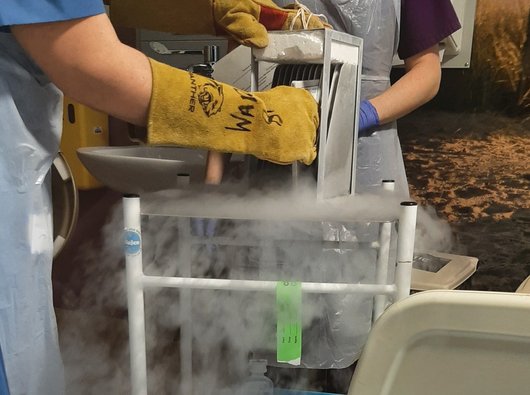
The infusion itself took just 20 minutes. Throughout the process, I was telling the cells to get on with it and do their job.
Recovery and remission
After the infusion I stayed in hospital to start my recovery. On around day three I started to get high temperatures, and I had regular monitoring for potential side effects like cytokine release syndrome (CRS) and neurological problems. Thankfully, I only experienced mild symptoms.
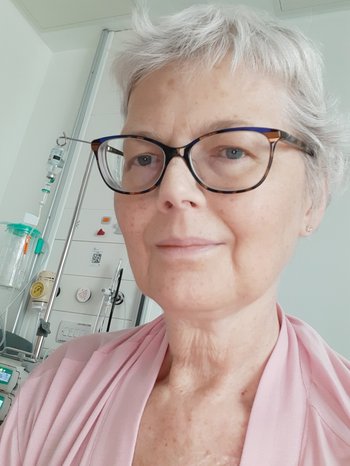
Jacquie in hospital 7 days after the infusion of her CAR T-cells.
I was discharged from hospital after two and a half weeks. Some people have to stay in hospital for longer. But as I was recovering well and lived close enough to come back quickly if needed, the team were happy for me to go home.
Before I was discharged, I had a meeting with my consultant. When talking to me about my temperature, she drew a graph and said I was in the “Goldilocks zone” – not too hot and not too cold. I loved that description, and that’s when I really started to think the treatment must be working.
At home I took things easy and slept or rested whenever I needed to, but I actually found my recovery was easier than it had been after chemotherapy.
I listened to my body and looked after myself, and slowly I regained strength. I returned to work after six months on a phased return.
By day 28 post-infusion, my first PET scan showed amazing results: all the cancer cells were gone. My 100-day scan also showed no signs of cancer, and at the beginning of June 2022 I was told I was in remission. I’ve been in remission ever since.
Life after CAR-T
Today, nearly three years post-CAR T, I am still in remission. My immune system remains compromised—a known side effect—so I take precautions like wearing masks in public spaces. Yet, I feel immense gratitude. This treatment didn’t just save my life; it gave me the chance to continue making a difference. As a safeguarding data analyst, I thrive on creating change and helping others. I’m also working with Blood Cancer UK to help campaign for better access to CAR T-cell therapy across the UK.
If there’s one piece of advice I would offer, it’s this: trust the science, but also trust your body and its strength.
CAR T-cell therapy isn’t a guarantee and it won’t be the right option for everyone, but for me, it was a lifeline. To know that my own cells fought this battle and won is nothing short of extraordinary. I’ll forever be grateful for the team at Leeds, the research that made this treatment possible, and the second chance I’ve been given.

